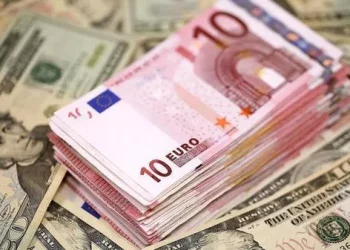At its core, an exchange rate reflects the supply and demand dynamics in the foreign exchange (forex) market. When more market participants seek to buy euros using pounds, the euro appreciates against the pound, increasing the value of 1 euro in GBP terms. Conversely, heightened demand for pounds weakens the euro. This mechanism operates within a complex ecosystem influenced by central bank policies, GDP growth differentials, inflation rates, and geopolitical events. To navigate this landscape effectively, it’s essential to distinguish between spot rates (the current market price for immediate settlement) and forward rates (agreed-upon prices for future transactions). This article will dissect these concepts and explore how external factors shape the EUR/GBP exchange rate.
Historical Perspective: Tracing the EUR/GBP Exchange Rate Evolution
Key Milestones
The Euro’s Inception (1999): When the euro was introduced as an accounting currency, it initially traded at around 0.73 GBP. This marked the beginning of a new era in European monetary union, replacing individual national currencies like the Deutsche Mark and French Franc.
The Global Financial Crisis (2008): The pound sterling plummeted against the euro due to the UK’s exposure to banking sector turmoil. The EUR/GBP rate peaked at 0.97 in 2008, highlighting the pound’s vulnerability during economic shocks.
Brexit Impact (2016–Present): The UK’s decision to leave the European Union triggered significant volatility. Uncertainty around trade agreements and regulatory divergence caused the pound to depreciate sharply, with the EUR/GBP reaching 0.92 in 2016.
Long-Term Trends
Analyzing data from the past two decades reveals that the EUR/GBP rate has oscillated within a range of 0.70–0.95. Periods of euro strength often coincide with UK-specific challenges (e.g., Brexit negotiations), while pound appreciation typically reflects robust domestic economic growth or ECB dovish policies.
Economic Drivers: How Macroeconomic Factors Influence EUR/GBP
Central Bank Policies
European Central Bank (ECB): By setting interest rates and implementing quantitative easing (QE) programs, the ECB aims to control inflation and stimulate growth. For instance, lower interest rates make the euro less attractive to investors, potentially weakening it against the pound.
Bank of England (BoE): Similarly, the BoE’s decisions on rates and asset purchases impact the pound’s value. A hawkish stance (raising rates to curb inflation) often strengthens the GBP.
GDP and Trade Balances
Relative Growth: Higher GDP growth in the UK relative to the eurozone can drive pound appreciation. For example, if the UK’s services sector expands faster than eurozone manufacturing, demand for pounds increases.
Trade Imbalances: A large UK trade deficit (importing more than exporting) requires selling pounds to buy euros, potentially weakening the GBP.
Inflation Disparities
Persistent inflation in one region erodes the currency’s purchasing power. If UK inflation exceeds eurozone levels, the BoE may raise rates, boosting the pound, or vice versa.
Market Mechanics: How the Forex Market Determines EUR/GBP Rates
Participants and Liquidity
The forex market is the world’s largest financial market, with daily trading volumes exceeding $6 trillion. Key players include:
Central Banks: Intervene to stabilize their currencies (e.g., selling euros to weaken the EUR/GBP rate).
Hedge Funds and Investors: Speculate on exchange rate movements to profit from volatility.
Order Types and Execution
Market Orders: Execute trades immediately at the prevailing spot rate.
Limit Orders: Set a specific price at which to buy or sell (e.g., “buy 10,000 euros at 0.85 GBP”).
Stop Loss Orders: Automatically close a position if the rate moves unfavorably, limiting losses.
Practical Applications: How Different Stakeholders Use EUR/GBP Rates
International Businesses
Import/Export Companies: A UK exporter selling goods to the eurozone benefits from a weaker pound (more euros per pound). Conversely, importers prefer a stronger GBP to reduce costs.
Multinational Corporations: Manage currency risk through hedging strategies, such as forward contracts, to lock in exchange rates for future transactions.
Retail Investors
Currency Trading: Speculators use platforms like MetaTrader to trade EUR/GBP pairs, aiming to profit from short-term price movements.
Diversification: Holding euros within an investment portfolio can mitigate risks associated with a single currency’s volatility.
Tools and Resources: Tracking EUR/GBP Rates
Real-Time Data Providers
Bloomberg Terminal: Offers comprehensive market data, news, and analytics for professional traders.
Reuters Eikon: Provides live rates, historical charts, and economic calendars.
Online Forex Brokers: Platforms like IG Group and OANDA display real-time rates with minimal latency.
Fundamental Analysis Tools
Economic Indicators: Track releases such as GDP, employment data, and inflation reports from Eurostat and the UK Office for National Statistics.
Sentiment Analysis: Monitor market sentiment through surveys (e.g., the CFTC Commitments of Traders report) to gauge speculative positioning.
Risk Factors and Mitigation Strategies
Exchange Rate Volatility
Sudden fluctuations in the EUR/GBP rate can erode profits for businesses and investors. For example, a 5% depreciation of the pound against the euro in a week could wipe out margins for UK importers. Mitigation: Use options contracts to cap losses while retaining upside potential.
Policy and Geopolitical Risks
Central Bank Surprises: Unanticipated rate hikes or QE announcements can trigger sharp currency movements.
Geopolitical Events: Elections, trade disputes (e.g., post-Brexit regulatory alignment), or international conflicts can create uncertainty. Mitigation: Diversify currency exposure and stay updated on political calendars.
Counterparty Risk
In over-the-counter (OTC) forex transactions, there’s a risk of the trading partner defaulting. Mitigation: Opt for regulated brokers and use clearinghouses for larger trades.
Analyzing the EUR/GBP Rate: Tools and Techniques
Fundamental Analysis
This approach involves studying economic, political, and social factors that affect the exchange rate. Analysts look at central bank policies, economic data releases, and geopolitical events. For example, when the BoE announces a change in interest rates, fundamental analysts will assess how it will impact the pound’s value relative to the euro.
Technical Analysis
Technical analysts use historical price charts and statistical indicators to predict future price movements. They look for patterns such as trends, support and resistance levels, and use tools like moving averages and relative strength index (RSI) to identify potential buy or sell signals in the EUR/GBP market.
Conclusion
The question “What is 1 euro in pounds?” extends beyond a simple numerical answer. It encapsulates a complex interplay of economic policies, market forces, and geopolitical events. While the current exchange rate provides a snapshot, understanding historical trends, macroeconomic drivers, and trading mechanics is essential for making informed decisions. Businesses must balance currency risks through hedging, investors should integrate EUR/GBP analysis into their portfolios, and individuals should monitor rates before currency conversions. As the UK and eurozone economies continue to evolve post-Brexit, the EUR/GBP rate will remain a critical barometer of transatlantic economic health. In an environment where volatility is the norm, staying informed through reliable data sources and economic analysis will be key to navigating the ever-changing dynamics of the euro-pound relationship.
Related topics























